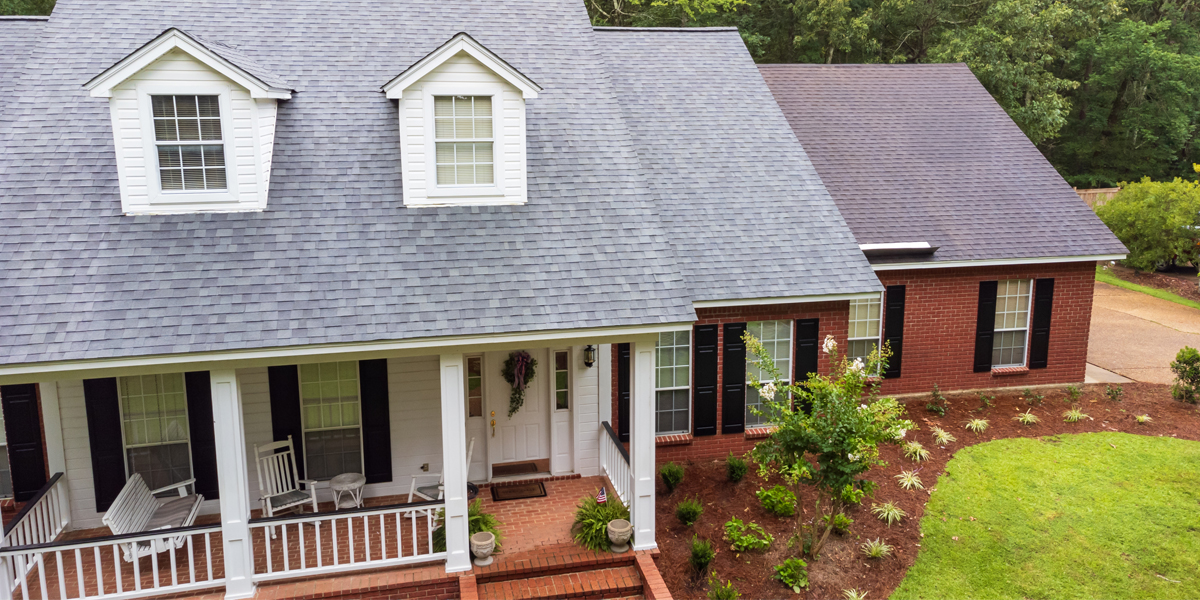Partial roof replacement: avoid costly mistakes with these insights

With the significant rise in roofing costs, some homeowners are choosing to go with an asphalt shingle partial roof replacement rather than replacing the entire surface. Whether it’s for budgetary reasons or long-term planning, this approach may seem appealing—but it also comes with some risks you should be aware of.
Why replace only part of an asphalt shingle roof?
In a context of rising costs, some homeowners choose a partial roof replacement instead of a full one. This decision is often driven by uneven wear on the roof—some areas being more exposed—or by the need to spread out costs over time.
The most common cases include:
- The south-facing side of the roof, along with galleries or protruding sections, which are more exposed to sunlight. The intensity of UV rays causes premature aging of the shingles, making these areas a priority for partial replacement.
- The main house roof is replaced before secondary structures such as a garage, shed, or attached shelter, which can usually wait a little longer.
This strategy allows costs to be spread over multiple years while addressing the most vulnerable areas first. It offers some financial relief but still comes with potential challenges, especially related to material continuity and visual uniformity.
The risks of discontinued materials
This type of plan comes with a commonly overlooked issue: shingle availability. Many asphalt shingle manufacturers update their product lines every five years—or even more frequently. This means the shingles installed today might no longer be available when it’s time to complete the rest of the roof. In some cases, even a relatively popular series can be removed entirely from the market.
And it’s not just about colour—it also concerns texture, shape, and technical compatibility. Here are a few real-life examples:
- One client selected a red asphalt shingle from a well-known manufacturer. Three years later, the colour was discontinued. No other brand offered a red close enough to match, forcing the homeowner to redo the entire roof to achieve uniformity.
- In another case, the house roof had been redone with a green shingle from a particular manufacturer. The homeowner planned to redo surrounding structures—the garage and large shed—the following year. However, in the meantime, that colour was withdrawn from the market. No equivalent was available from the same manufacturer, but fortunately, a relatively similar shade was found from another. To maintain visual consistency, this new shingle was used for the adjacent buildings.
Are classic colours a safer choice?
Standard colours such as black, brown, or dark grey are generally more consistent over time. These tones are often part of the manufacturer’s core collections, even as product lines evolve.

In contrast, more unique or seasonal colours—like green, red or blue—are more likely to be discontinued or significantly altered over time.
If you’re considering a partial roof replacement and visual uniformity is important to you, it’s highly recommended to stick with a classic colour. This increases the likelihood of finding a matching or nearly matching tone when you’re ready to complete the project.
Other important considerations
- Ageing gap: Shingles installed at different times may weather differently, leading to noticeable visual contrasts over time.
- Warranty: Conditions can be limited in cases of partial roof replacements. It’s important to note that some manufacturer or contractor warranties do not apply in the same way when only part of the roof is replaced. For instance, replacing only a dormer, gallery, or turret beneath an untouched slope may raise liability concerns in the event of a leak coming from above.
- Overall cost: While partial roof replacement may seem more affordable upfront, it can end up being more expensive long term. Each team visit comes with fixed costs, as does reinstalling ladders, scaffolding, safety equipment, and managing site logistics. When these steps are repeated over a few years, the total often exceeds that of a single, complete project.
In summary
A partial asphalt shingle roof replacement can be a practical short-term solution, but it needs to be carefully considered. Before moving forward, speak with a professional to assess the risks related to materials, long-term appearance, and warranty conditions.
👉 Looking for advice or a tailored quote? Our team is here to support your roofing project, whether it’s partial or full.